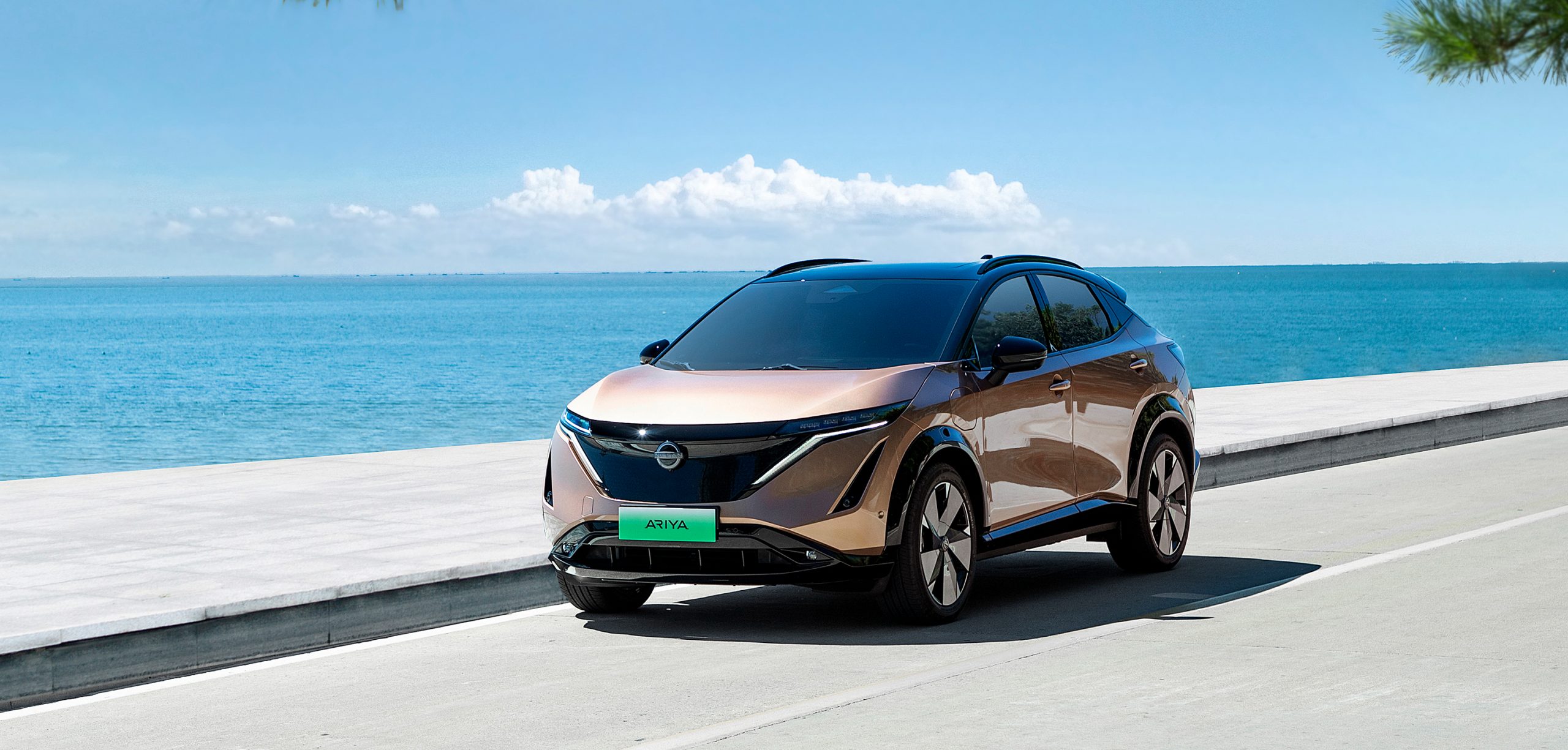With the arrival of the electrification era, both new energy vehicle companies and traditional automakers have released their own pure electric vehicle models. However, Japanese automakers, which have occupied a place in the traditional fuel vehicle era, have not yet released their own pure electric vehicle models. In July, we published a video discussing why Japanese automakers have been slow to launch their own pure electric vehicles. Interested friends can take a look at “Do Japanese automakers really not know how to make electric cars?”
Currently, among the Japanese big three, they have all released their own pure electric vehicle models, and coincidentally, the first models of all three companies are SUVs. Honda was the first to launch its own pure electric product line. As early as April of this year, it officially released the e:NS1 based on the e:N Architecture F pure electric platform it built. Also in April, Toyota announced the pre-sale price for its pure electric vehicle model, the bZ4X, built on the e-TNGA architecture.
Although Nissan started blind pre-orders for its new ARIYA on the CMF-EV platform in April, the price has not been announced yet. However, on September 17th, I was fortunate enough to participate in a test drive of the Dongfeng Nissan ARIYA and experienced the new car based on the latest pure electric platform made by Nissan.

Introduction
First, Dongfeng Nissan introduced the history of its manufacturing of electric vehicles. In fact, as early as 1947, Nissan had launched an electric vehicle product for the consumer market, and in 2009, it launched the world’s first pure electric car, the LEAF, this time with the protagonist, ARIYA, which had already appeared at the Milan Auto Show in 2020.

ARIYA adopts the new Yokohama platform, and compared to its competitors, it has the longest effective interior length when the vehicle length is at its shortest.

In terms of the three electric components, the motor part of ARIYA adopts Nissan’s self-developed electrically-excited synchronous motor, which combines the advantages of low energy consumption of permanent magnet synchronous motors and high performance of AC asynchronous motors. The maximum power of a single motor is 178 kW and the maximum torque is 300 N·m. The maximum speed of the single motor model is 160 km/h.
 In terms of electronic control, Nissan claims to have achieved ultra-high precision motor torque control at a speed of 1/10,000 second, with three main features of “quick response,” “maximum acceleration capability,” and “smoothness.”
In terms of electronic control, Nissan claims to have achieved ultra-high precision motor torque control at a speed of 1/10,000 second, with three main features of “quick response,” “maximum acceleration capability,” and “smoothness.”

In terms of battery, the four-wheel-drive version is equipped with a 90 kWh high-density liquid lithium battery, with an average energy consumption of 18.7 kWh per 100 kilometers and a fast charging time of 40 minutes. The 7 kW slow charging time is 14 hours. The long-range version CLTC has a driving range of up to 623 km.

In terms of energy consumption, through my actual test on ground roads in Qinhuangdao City, the total driving distance is 34.6 km, and the average energy consumption per 100 kilometers is 18.5 kWh, which meets the official publicity data.

The battery pack has nine layers of physical safety protection, which can effectively reduce the impact force on the battery in case of an accident. Coupled with active battery safety management, it guards the battery compartment in all aspects to ensure its integrity and non-invasion.

This time, ARIYA claims to achieve the best results in design, safety, performance, intelligence, comfort, and service, becoming a “versatile hexagonal warrior.”

The ARIYA central control adopts a dual-screen design, and the central armrest area is not directly connected to the central control, but has a hollowed-out design. The top configuration version of the central armrest area can be electrically adjusted front and back by 150 mm. When adjusted to the rearmost position, both the driver and passenger can move back and forth freely, making it convenient to get in and out from the passenger side when it is inconvenient to open the door from the driver’s side. In addition, there is an electrically retractable hidden storage compartment below the central control area, which can be continuously adjusted in length.
 The ARIYA four-wheel drive version is equipped with Nissan’s independent e-4ORCE snow fox four-wheel drive system. In addition to the previously mentioned high-precision motor torque control, there is also front and rear intelligent torque distribution, which can achieve intelligent switching between full front-wheel drive, full rear-wheel drive, and four-wheel drive modes, with a maximum torque of 600 N·m, which is the same level as the “Japanese God of War” GT-R. In addition, there are three conventional driving modes and snow mode.
The ARIYA four-wheel drive version is equipped with Nissan’s independent e-4ORCE snow fox four-wheel drive system. In addition to the previously mentioned high-precision motor torque control, there is also front and rear intelligent torque distribution, which can achieve intelligent switching between full front-wheel drive, full rear-wheel drive, and four-wheel drive modes, with a maximum torque of 600 N·m, which is the same level as the “Japanese God of War” GT-R. In addition, there are three conventional driving modes and snow mode.

In terms of intelligent cockpit, the ARIYA is equipped with a 10.8-inch high-definition HUD that supports AR scene navigation, supports four-sound zone sound source positioning voice control, and supports FOTA upgrade function.

The entire vehicle adopts double-layer sound-insulating glass, allowing the entire vehicle to achieve a high level of NVH.
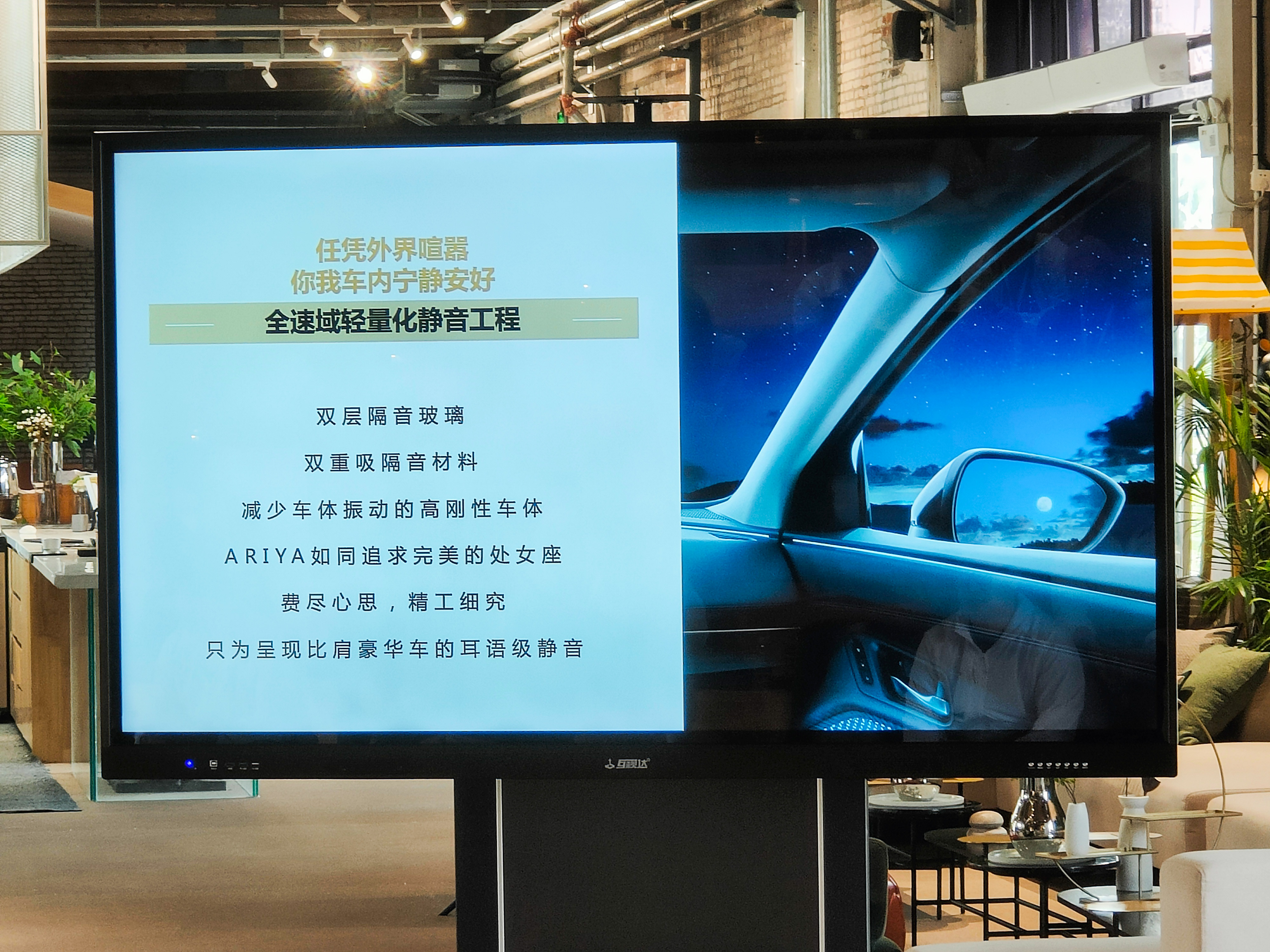
Finally, all the core information is in this picture, so let’s go and see how the real car is next.

Static Experience
Appearance
When you saw the Nissan ARIYA for the first time, what car did you think of? I thought of the front face of Cadillac and the body contour of the Volkswagen ID4 series. It is indeed a compact SUV like the ID4.

This feeling is even more when it comes to the side, but the ARIYA does not use a hidden door handle design. Also, I personally think this five-spoke low-drag wheel is quite good-looking.
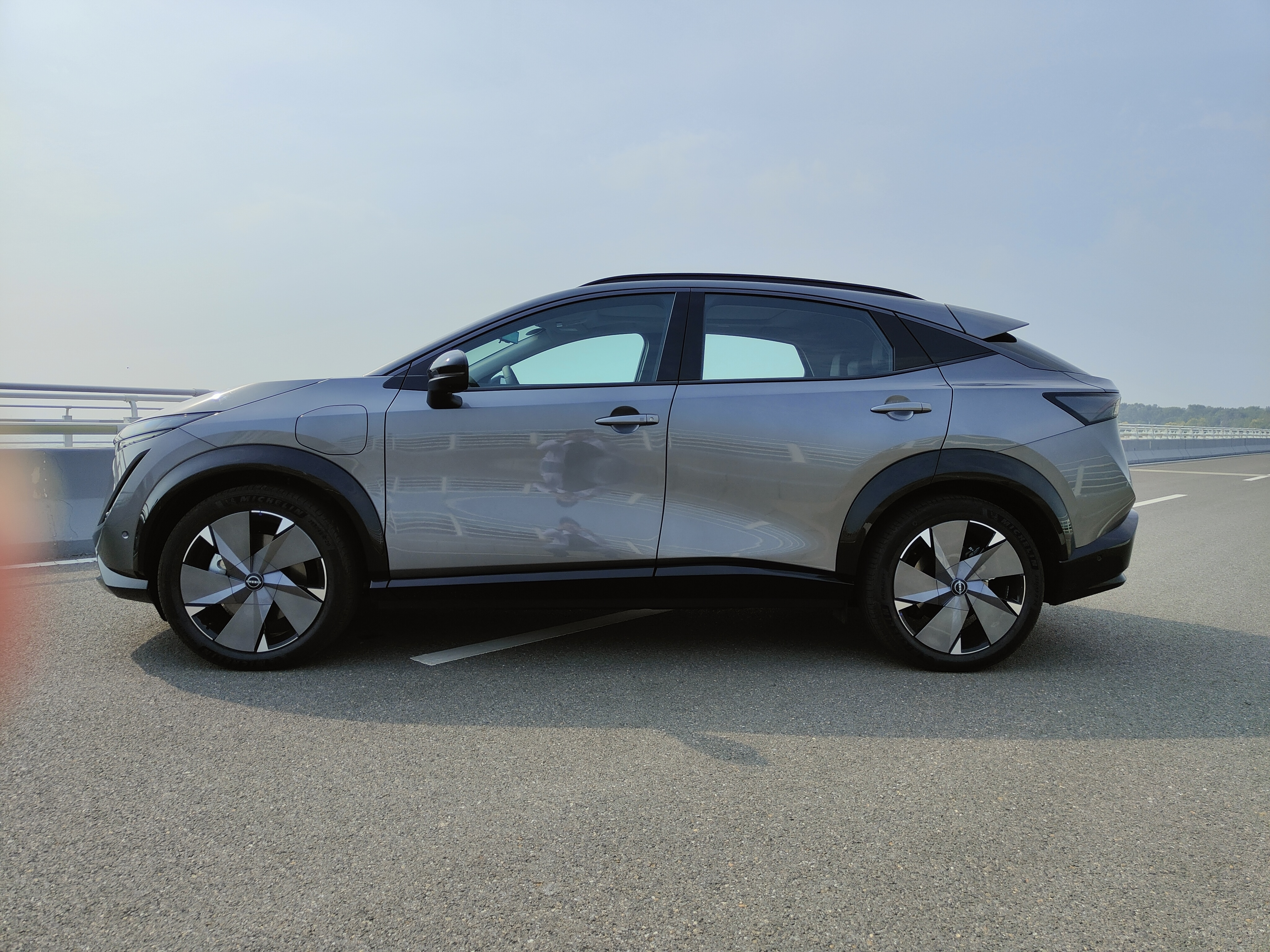
The front face adopts the “Mo Yu Jing Shield” enclosed front face, the “Flowing Light and Flying Feather” LED headlamp group, and the NISSAN logo in the center will glow, which looks particularly beautiful at night.

Although the ARIYA uses a pure electric platform, it does not have a front trunk in the front, which is a bit regretful.
The air intakes on both sides of the front bumper are not just decorations; they actually go all the way to the wheel positions, which helps reduce the vehicle’s coefficient of drag.

The tires used are Michelin Primacy 4, which inherit the quiet characteristics of the Hao Yue family, with a specification of 255/45 R20.

The DC and AC charging ports are located on the left and right sides of the front of the vehicle, which is a pity. When I asked Nissan officials about this issue, they replied that ARIYA is a global model, and the global survey results show that most of the respondents in China hope that the charging port is located at the rear of the vehicle, while in other regions, more respondents hope that it is located at the front of the vehicle, which is why it was designed this way.


Moving to the rear of the vehicle, Nissan also used the familiar through-type taillight design. It is worth mentioning that the NISSAN letters in the middle are not conventional letters pasted on the outside, but are embedded in the taillights.

The trunk adopts a hatchback design, and for a compact SUV, the storage space is above average, so there is no problem putting down the luggage for a family of three on a trip. If it is not enough, you can also remove the shade cover with tools to obtain more storage space. In addition, the rear seats also support 4/6 folding.


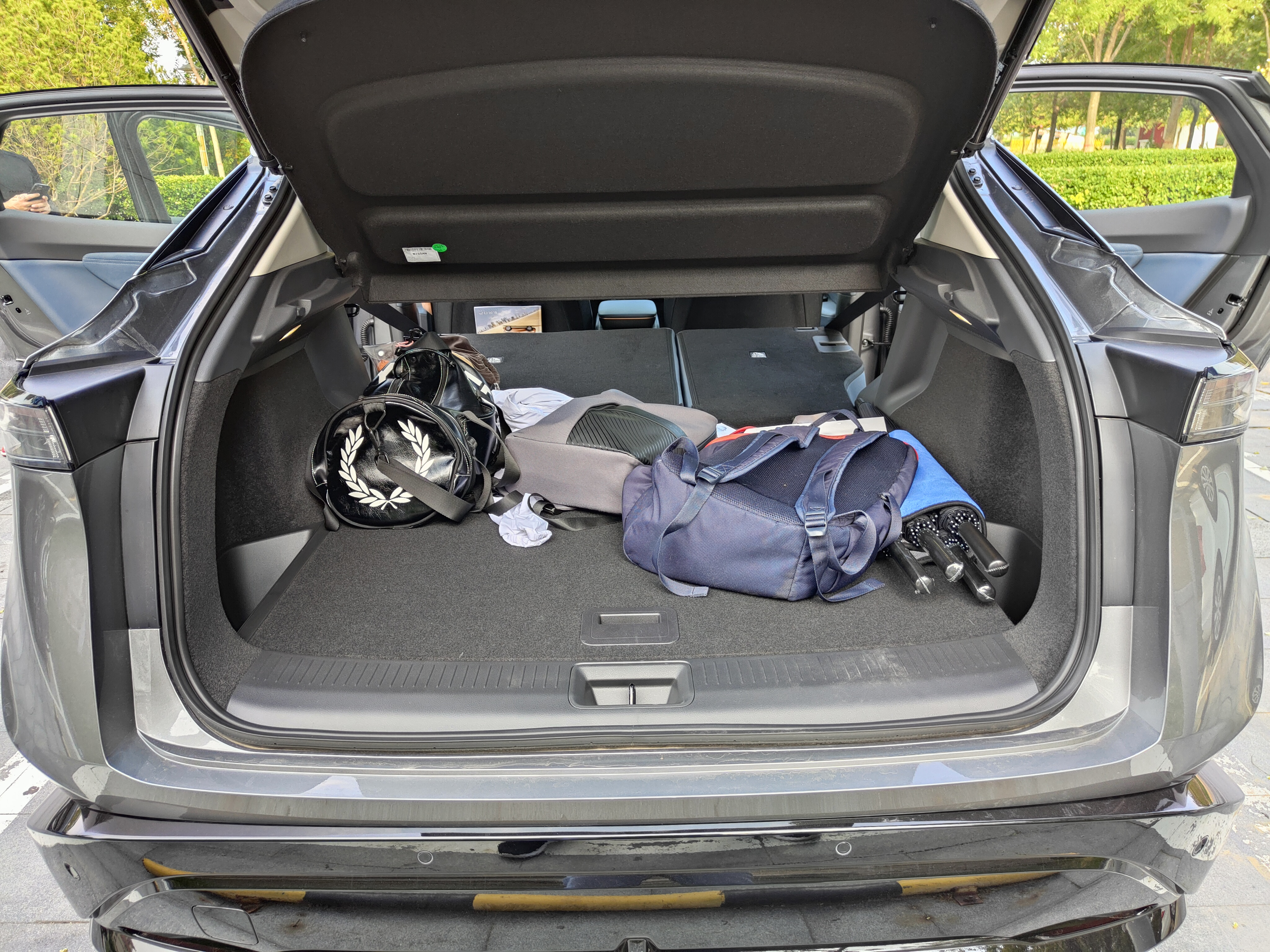 There are storage compartments on both the left and right sides of the trunk, with a depth of about the length of a small bottle of mineral water, as well as two hooks.
There are storage compartments on both the left and right sides of the trunk, with a depth of about the length of a small bottle of mineral water, as well as two hooks.

Lift the cover, and underneath is a place to put tools and some less commonly used items.

After talking about the appearance, it’s time to experience the interior of this car.
Interior
First of all, I must make it clear that I experienced the top-of-the-line ARIYA 4WD version, and all the configurations below represent only this version.
Sitting in the driver’s seat, the feeling of a “big sofa” comes instantly. Because the backrest and cushion are relatively soft, you will feel like you are really sitting on your own sofa in an instant.

First, here is a real shot of the interior of the front row. The whole central control area of the front row is made of suede and woodgrain materials. Do you like this kind of interior design?

The steering wheel adopts a two-spoke design, which feels full and can hold the direction stably even during intense driving. The steering wheel supports 4-way manual adjustment.

On the left side of the steering wheel are multimedia control-related buttons, as well as a quick menu button that can be used to control different display themes of the instrument panel and other functions.

On the right side of the steering wheel are auxiliary driving-related buttons, as well as a voice wakeup button and a Bluetooth phone call button.

The turn signal lever uses an auto-resettable turn lever like Tesla’s, and it takes some getting used to the first time using it.

The door panel uses a combination of suede and leather, and can remember two driver positions. The control buttons are basically the same as in traditional fuel vehicles.


The storage space on the front door panel is large enough to hold 4 small bottles of mineral water with ease.

The driver’s seat supports 8-way electric adjustment, but the back support only supports 2-way adjustment.

The center console is designed with twin 12.3-inch dual screens, which may bring a sense of familiarity. The instrument panel can switch between technology and traditional themes to meet the needs of different people.


In addition, ARIYA is equipped with a 10.8-inch HUD, which can display speed and various prompt information as well as related information on driving assistance. It allows drivers to keep their eyes on the road without having to look at the dashboard.

The center console system has a traditional gasoline car feel, but the system runs smoothly. The built-in navigation uses Gaode maps and is tested to have no issues with daily use.

The air conditioning in the front is manually adjustable. Personally, I think manually adjusting the air direction is more intuitive.
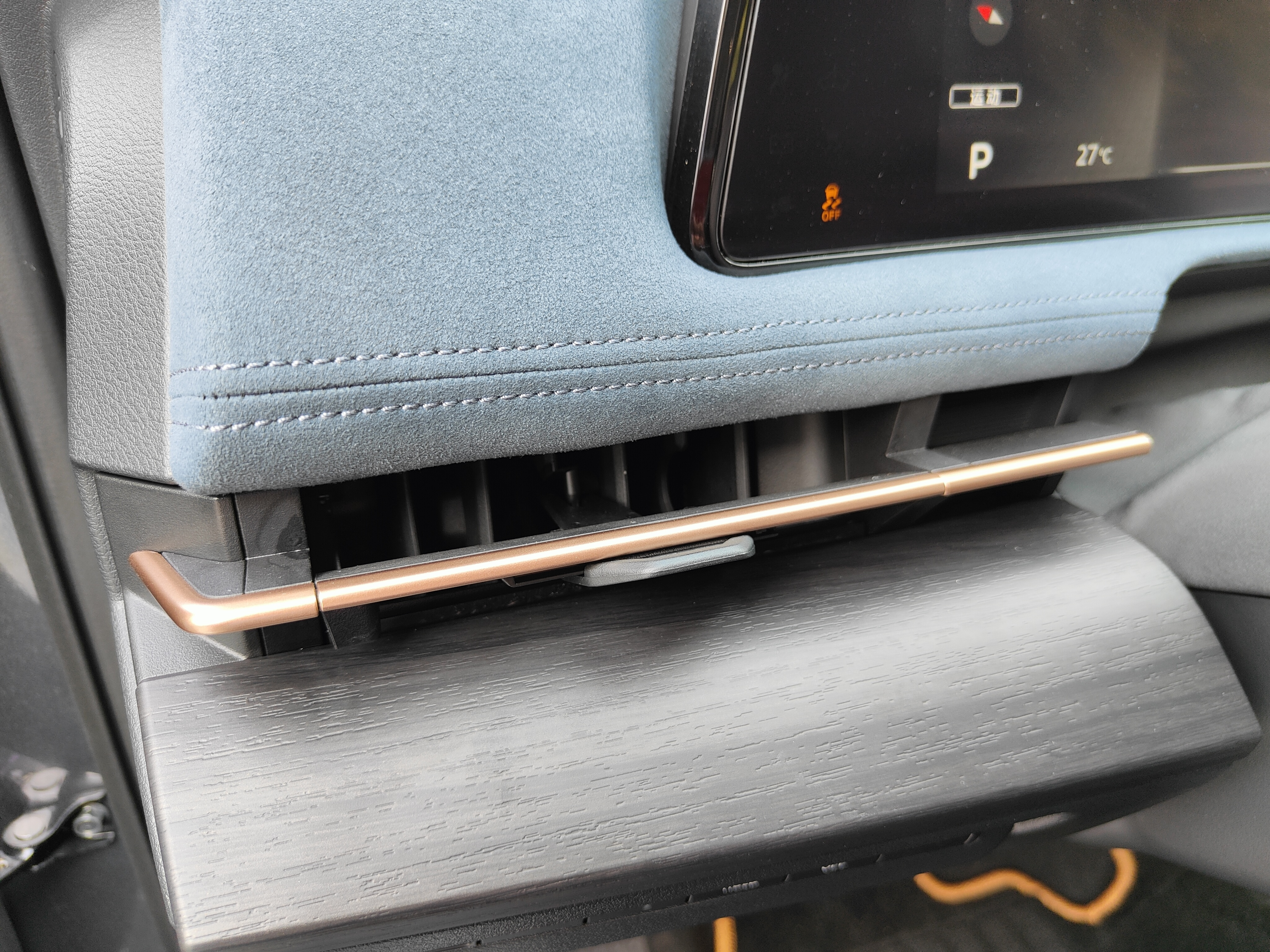
The row of physical shortcut buttons on the left side of the driver’s seat still has the feel of a traditional automaker.
There is a volume control knob under the central console screen, which I really like. On the wooden decoration board below, there is a vehicle start button and a row of touch buttons to control the air conditioning. Nissan has added a vibration touch sensation similar to that of an iPhone to this row of touch buttons, instead of the cheap “buzzing” vibration sensation. The pressure sensation is very similar to that of a physical button.

The gear lever is still in the central armrest area, and behind it are touch buttons for automatic parking, intelligent pedal mode, driving mode switching, and switchable hidden storage compartments. These buttons also have excellent vibration feedback sensation.

Under the cover on the right side, there are two cup holders. By opening the armrest cover, you can see the wireless charging location. You don’t have to worry about being distracted while driving with your phone placed here. The small storage compartment behind can hold some receipts.
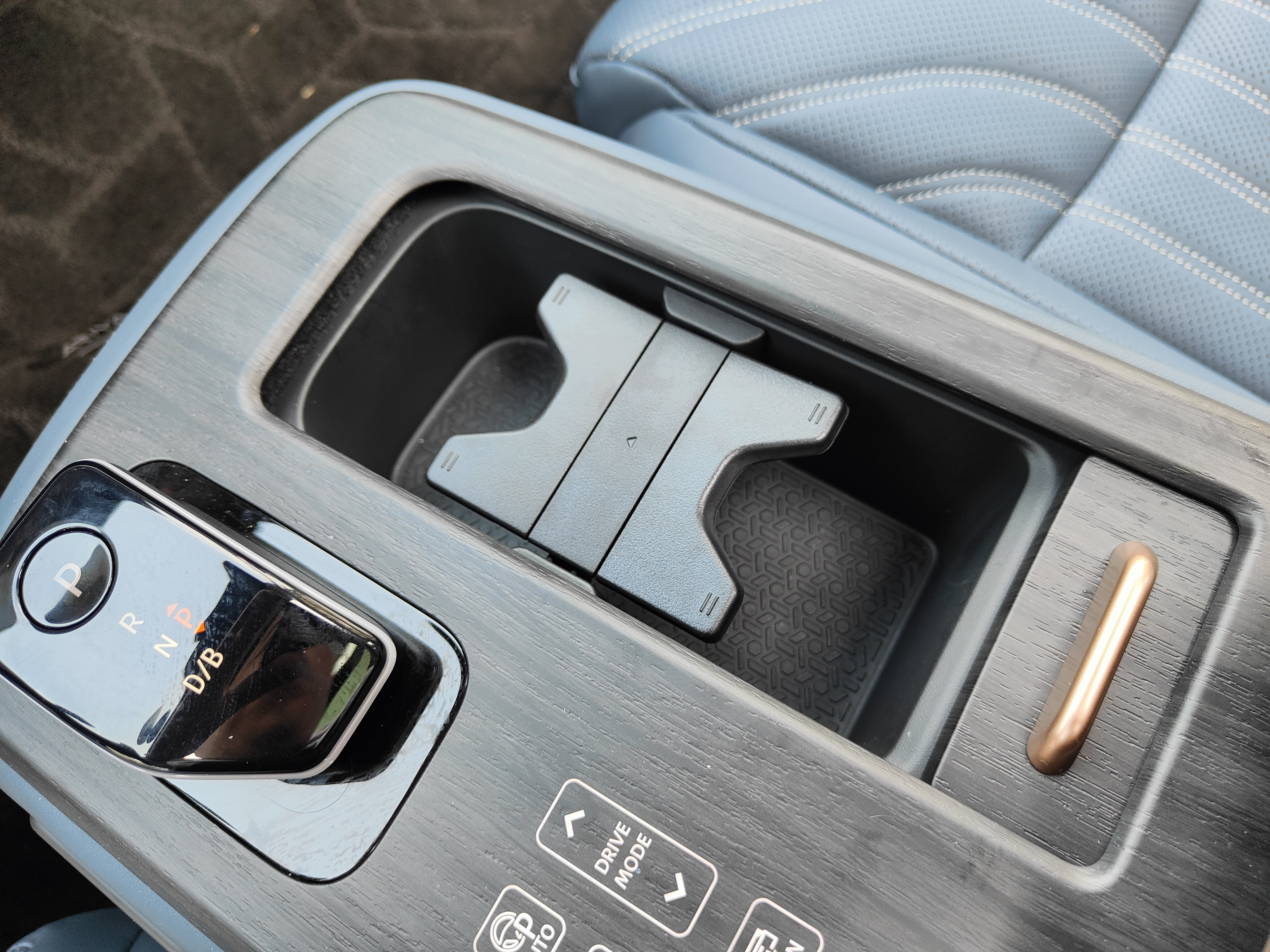

Long press the button to raise the hidden storage compartment, and the electric storage compartment will extend from below the central console screen. The overall storage space is not large, but it is still no problem to put a few packs of tissues.

The 12V charging port and two USB ports are placed at the bottom of the armrest, which is not easy to notice without careful observation. In addition, there is also a small storage compartment here where you can put some receipts.

The central armrest supports front and rear electric and stepless adjustment, and the adjustment button is placed on the left side of the armrest. The stroke reaches 150mm, and the space size when adjusted to the front and rear is shown below.


The interior rearview mirror adopts dual-mode streaming media and conventional modes. Pulling it up activates the streaming media mode while pulling it down switches to the conventional mode, meeting the different needs of users.


Apart from the reading lamp control button and SOS alarm button, the reading lamp area also features a glasses case, sun visor and sunroof control buttons, providing a very complete configuration.


The top sunroof adopts a two-section design; the front section can be opened to allow partial ventilation but cannot be extended outward, which is considered safer. Below the sunroof is an electric sunshade which can be adjusted smoothly without steps.

It is regrettable that there is no lumbar support for the front passenger.

Moving to the back row, the seats are still the familiar large sofa, with the middle cushion and backrest being very soft, which is truly excellent among the several cars recently tested by me. The cushion is long enough, comfortably supporting my thighs with a height of 176 cm.

Thanks to the all-new Yun Tu pure electric platform, the rear floor is flat, eliminating any discomfort even when sitting in the middle.

The central armrest in the rear row only features two cup holders with relatively simple configuration, which is also the reason for the relatively soft central backrest.
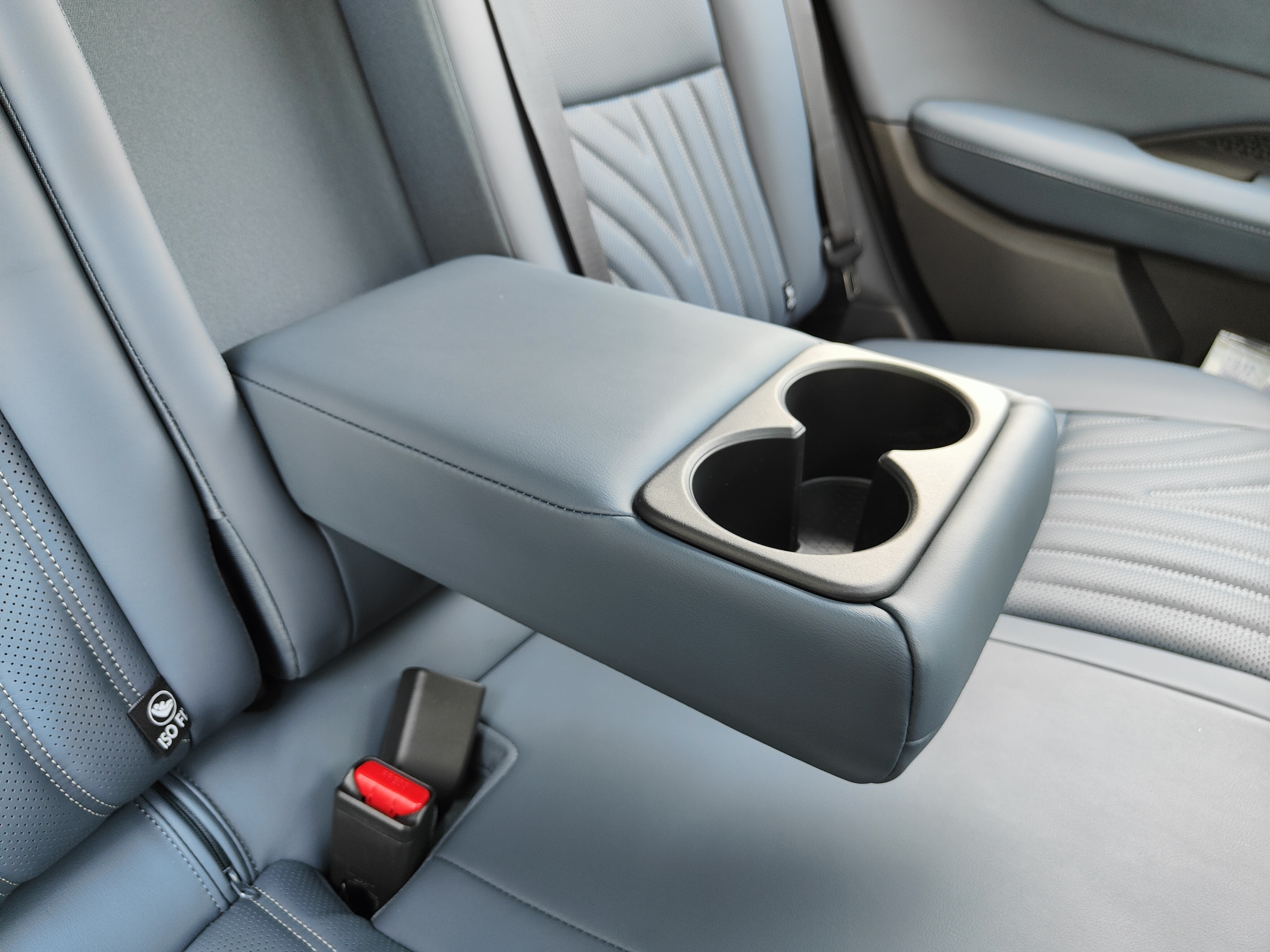 The rear air outlets have the same 1 A 1 C USB charging ports as the front seats, and there are also two physical buttons to control the heated rear seats.
The rear air outlets have the same 1 A 1 C USB charging ports as the front seats, and there are also two physical buttons to control the heated rear seats.
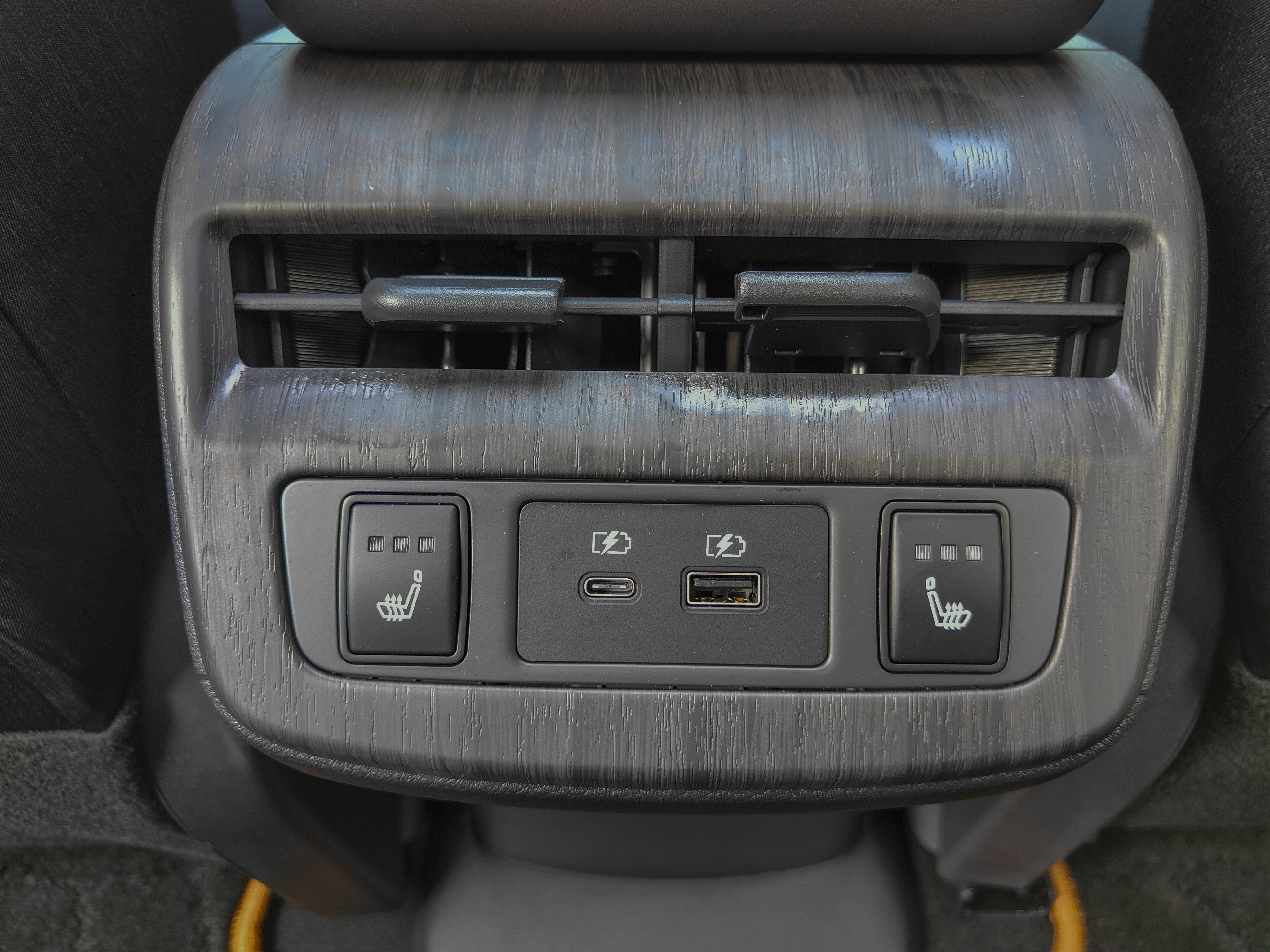
The storage space for the rear door panel is small and can only hold 2 small bottles of mineral water.

So far, the static features of ARIYA have been covered. Now, let’s talk about how it feels to drive the car.
Driving Experience
Firstly, I performed the test drive on a set-up circuit where there were various challenges including acceleration, braking, cornering stability, and a Moose Test, which tested various aspects of the vehicle performance.

Starting from the starting line, it was necessary to accelerate to full speed, then decelerate to 50 km/h at the corner, go through the moose test, turn two corners, drive on a metal sheet road, and finally slow down to complete a lap before reaching the finish line.
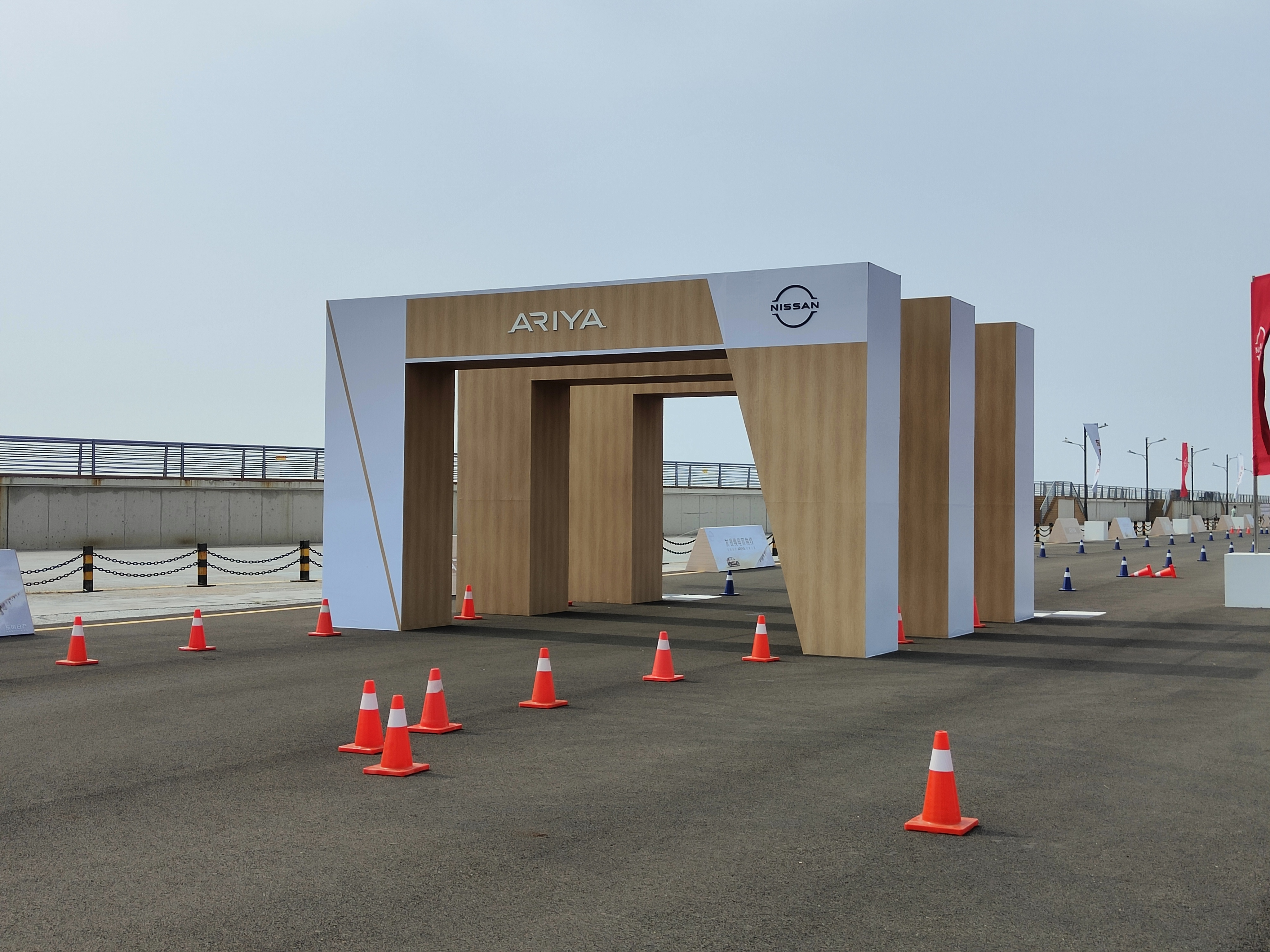
Although the entire track was not too difficult, achieving a good score was not just about going fast, as there was a complex scoring system. Additionally, there was a cup of water in the car and if too much water was spilled, points would be deducted.
What was more important was that through the test drive, I truly experienced the excellent driving experience of ARIYA. Firstly, in sports mode, the full acceleration was not aggressive. The vehicle required the driver to press down the accelerator pedal to about 1/3 of its position before releasing all the power, which was the type of tuning I preferred.
Secondly, although the e-Pedal single pedal mode was turned on during braking, releasing the brake pedal did not slow down the vehicle like a Tesla. The regenerative braking was very smooth, and the feedback was appropriate when pressing the brake pedal. When switching to hydraulic braking, there was no obvious feeling.
Passing through the corner at 50 km/h, there was no obvious difficulty, and the e-4ORCE Snow Fox four-wheel drive system was able to easily stabilize the vehicle at this speed, making me feel confident that there would be no problem even if the speed was increased to 60 km/h.
The Moose Test further demonstrated this point. As the steering wheel turned, the vehicle responded very quickly, and the driver would feel that it was “very obedient,” which filled me with driving pleasure.The on-site demonstration also showcased the automatic parking function. ARIYA supports three types of automatic parking: reverse parking into a vertical parking space, forward parking into a vertical parking space, and parallel parking into a side parking space. In addition to automatically recognizing the parking space, it also supports manual adjustment of the parking position. Due to the charging port of the ARIYA being located at the front of the vehicle, forward parking is particularly important.
All three types of parking were demonstrated on site, and the vehicle posture and parking speed for all three were good. However, as the demonstration site had no other vehicles or obstacles, it was not possible to comprehensively evaluate the vehicle’s ability to park automatically.
Advanced Driving Assistant Systems (ADAS)
Since I was test driving the car, how could I not test the ADAS? I tried to activate it after confirming that it was available. However, due to the limited suitable roads near the hotel in Qinhuangdao, I could only choose a stretch of open ground for testing.
The startup process is similar to that of a fuel-powered car. Click the blue start button on the right side of the steering wheel, and the vehicle will enter the ACC adaptive cruise control mode. Use the up and down buttons to adjust the vehicle speed, and the lower right button to adjust the following distance. The “CANCEL” button cancels the ADAS mode.
It should be noted that when the ARIYA enters the ACC mode, it will only activate the lane keeping function if it recognizes the lane markings and the vehicle speed is greater than 60 km/h. I tried it briefly on an open road, and the lane-keeping was stable, and it handled a small curved path at 70 km/h with no problems.
However, its ability to pass through intersections is poor. When not following another vehicle, it cannot pass through intersections wider than 10 meters. Overall, its lane-keeping ability is not comparable to that of newer models.
In addition, the lane-changing function was mentioned in the official introduction. However, I was unable to use it in my actual testing. Later, when I asked the Nissan representatives, they responded that it needs to be activated at a speed of 65 km/h.
After briefly testing the ARIYA’s ADAS, I can say that this Mobileye-based system is still quite usable. However, in comparison to newer models as well as the Mobileye-based Volkswagen ID family, it still has some catching up to do.
Conclusion
I used to think, like many others, that Japanese automakers were slow to make the transition to electrification. Perhaps it was due to a lack of understanding and emphasis on electrification. However, after experiencing the Nissan ARIYA, my opinions have changed.
 If I were to give ARIYA a conclusion, I would say that this is a more powerful and better interior ID4. I can see the shadow of Volkswagen ID4 in the appearance and infotainment system, but Nissan has maintained its own understanding of vehicles in terms of interior design and seat comfort, etc.
If I were to give ARIYA a conclusion, I would say that this is a more powerful and better interior ID4. I can see the shadow of Volkswagen ID4 in the appearance and infotainment system, but Nissan has maintained its own understanding of vehicles in terms of interior design and seat comfort, etc.
In terms of vehicle handling, I can see that Nissan has continued some of its advantages in fuel vehicles and even GT-R to ARIYA, providing me with a deep impression of excellent steering feel, vehicle pointing, and linear acceleration and braking pedals, deserving the title of the “hexagonal warrior”.
ARIYA will officially announce its domestic price next week. The current European price is about RMB 353,000 to RMB 493,000 after conversion, which will certainly be unattractive in the domestic market.
However, if Nissan can price ARIYA comparably or even lower than the ID4 series in the domestic market, this vehicle will still have considerable competitiveness among the joint venture electric cars, and even have the opportunity to become a vehicle for Japanese carmakers to reignite in the pure electric vehicle market.
This article is a translation by ChatGPT of a Chinese report from 42HOW. If you have any questions about it, please email bd@42how.com.
